LAUNCHING A MAGAZINE
CASE STUDY
CASE STUDY
The following is an excerpt from the first issue of 3vies. In the welcome I recount the backstory and reason for starting the magazine:
“An interesting thing happened when I turned 29, I woke up. It was as if I asked myself, “Did I choose this life?”. I woke up to life and realized that I was on auto pilot and had let society and the world around me make so many of my decisions subconsciously. Anita and I found ourself asking, “Wait where did our 20’s go”? We started looking back at a decade that had passed and wondered what, if anything, we had really decided. We had both graduated form college, had a good marriage, a wonderful house, 3 beautiful kids, a great job with security and flexibility and yet we felt like something was missing. I realized that so much of my life had been unintentional…Over the last 2 years Anita and I have been working very hard to uncover what it looks like to live an intentional life. This is the beginning of sharing what we find. “
Along with this I also would like to explain some other elements not noted. At the time I began to write and design the magazine I had felt frustrated with my day job and wanted to build a product I could fully control. With this I had spent the previous 5 years writing software and was craving a shift. I have always identified with designers but in college I felt Technology was a better career path to provide for my growing family. I chose the tech career path and became an iOS Developer and then a research engineer but in my heart I have always been a designer. It’s who I am and how I think.
SO WHY A MAGAZINE? A few things inspired this. First my grandpa. He had written his life history and given a copy of it to each of his children and grandchildren. I took it with me while I lived abroad in France for 2 years. I was intrigued at how many people wanted to read it. They were fascinated with how seeing the everyday life of another average person. I came to realize it’s the same reason people want to see the behind the scenes footage of a movie or watch the directors commentary. People want to know how other humans build things and understand how they make decisions.
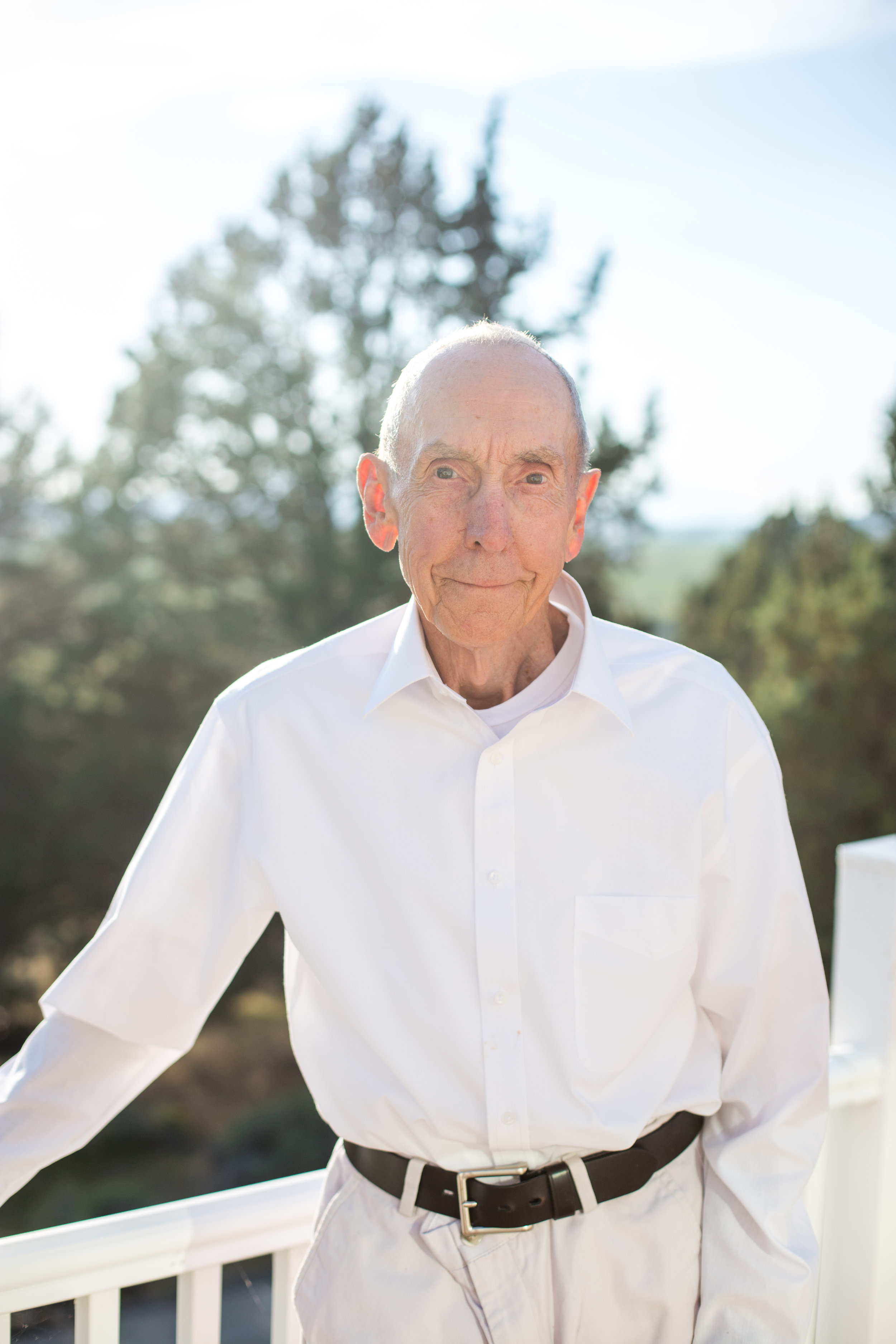
Second, was Kinfolk. It was the first time I ever thought of a magazine as art. I saw beautiful photography really bring to light a culture. Their brand and message was lived and felt in every aspect, which was to slow down and take time for small gatherings of people you care for the most. It was also the first add-free publication I had seen and I loved it.

Lastly I started an entrepreneur course called startup camp. It was a twelve month program design with each month module focusing on a different step in the entrepreneur journey. It is a stellar program. Months one to six guide you to launching. Then six through twelve gives you the tools and tips to grow. Really if you are looking for a guide to turning your passion into a business, check out startup camp.
I originally launched the magazine as AM, which stood for Anita & Mark, my wife and I, but right after the launch began rebranding it. Which was not ideal at all but I was blind to how my wife felt. She was focused on launching her own ceramic business, Nita Cole.

MEANING - 3vies is French for three lives. There is longer back story, but at the core, it means When you live your life intentionally you can accomplish the equivalent of 3 lives in 1 lifetime. Another hidden meaning is 3 lives are my 3 kids. Everything I write is to influence and inspire them. My goal is to write something that they may one day come across, when they are ready and in their own time. It may be when I am long gone and I hope it will inspire them to act. What ever it is that speaks to them I hope they go and do it.
SKETCHES - I started, like most projects/ideas, with pencil and paper. I love to sketch out ideas. It’s one of the things that really helps me think and understand. Initially I was thinking of combining the 3 and the v some how but didn’t want to be too literal. I started trying to figure out a more abstract approach.

FINAL - I had posted the rebranding on my Dribbble account and was talking with some of my friends and listening to their critiques. I had some kerning work to sure up the spacing. I was also posting examples of using it and felt I needed better rounding on the corners of the watermark as well. It’s important to put your work out there, get feedback and then assess which refinements are needed. Critiques only made my work stronger in the end.

The branding guide is a compilation of branding/marking/culture/vision. I wanted it to be something I could hand to a new hire or a consultant and have them understand the overall brand. I was also setting up design elements that would span multiple volumes. This would give a grounding cohesion throughout the years to come. It laid out the logo, typography (and how it is used), photography guidance (Which really helps in the curation process, even when you are both the photographer and the art director), and marketing examples.
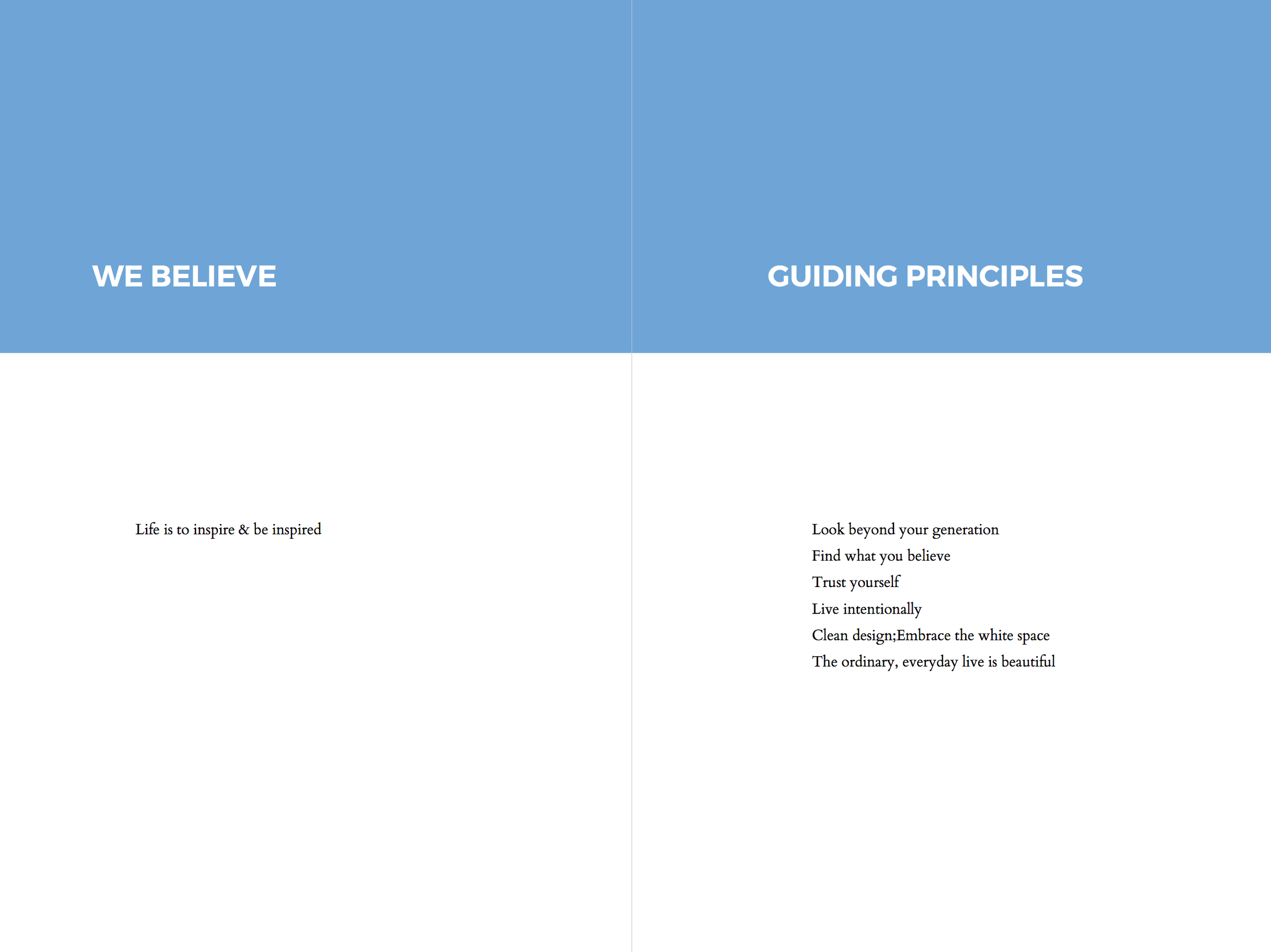
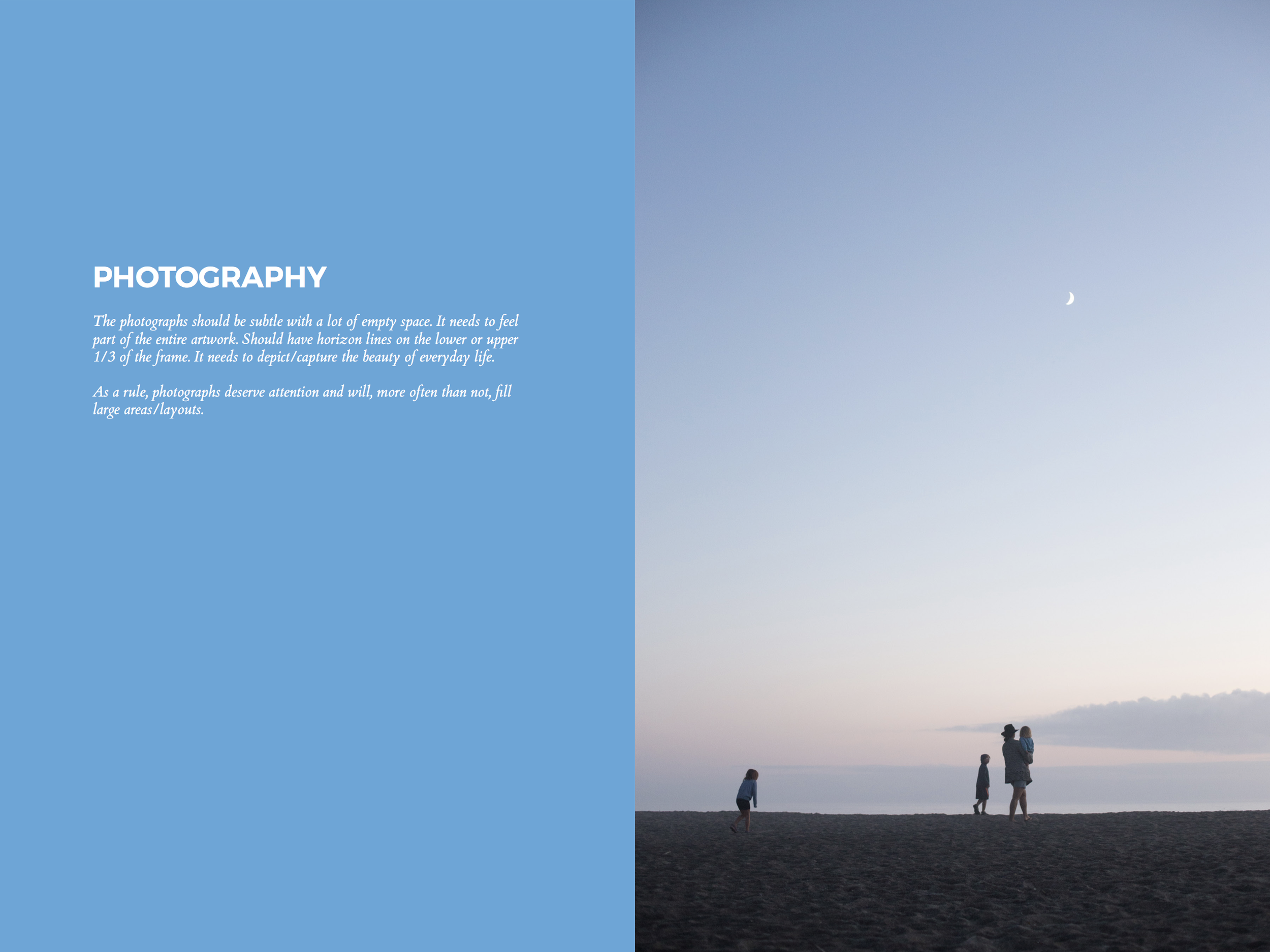

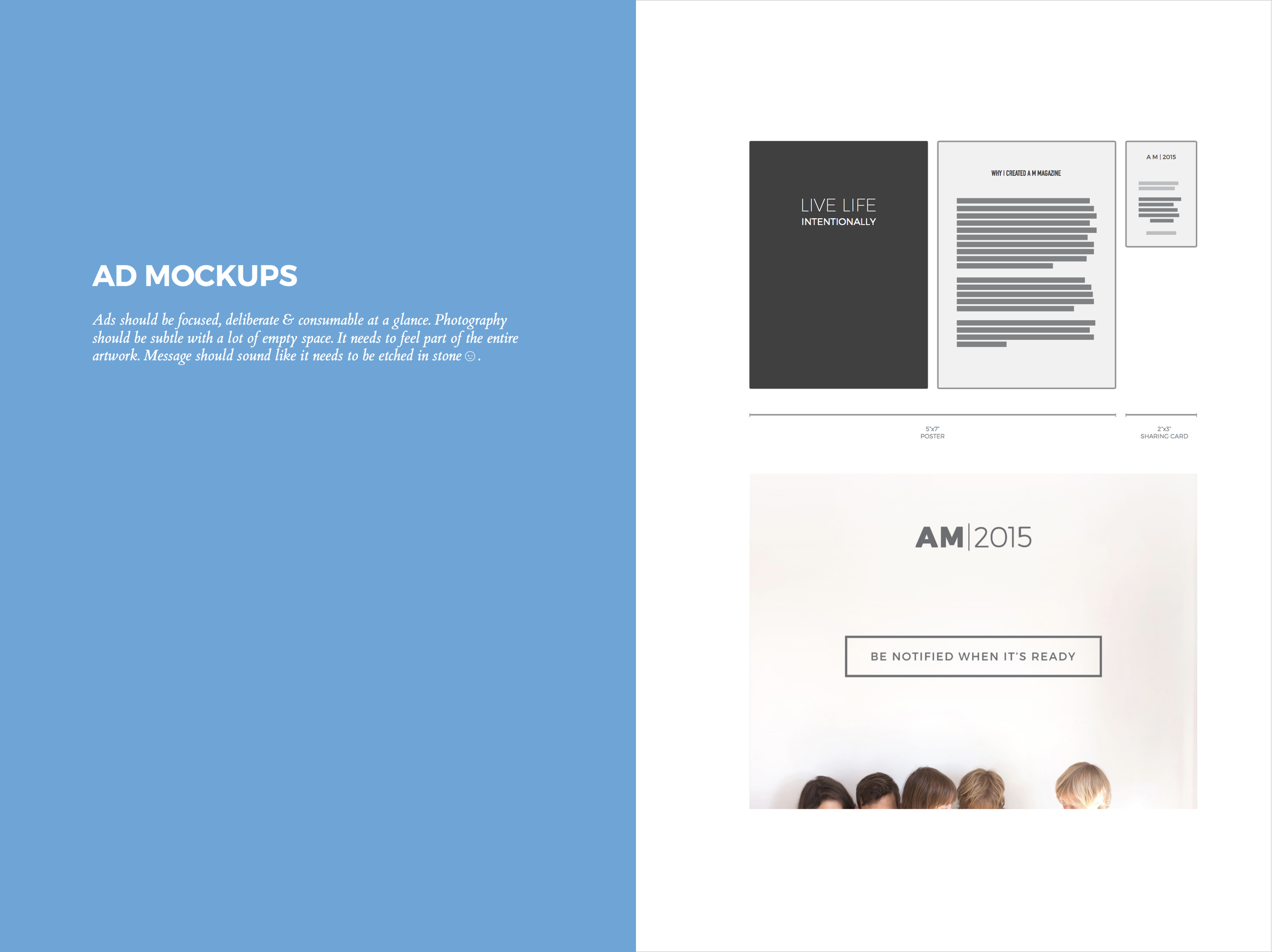
I have published 2 issues to date (2015 and 2016). Literally the day after I launched the first magazine I started working on the next issue so there is many things that stayed the same. I kept the article layout, which was designed to feel more like a classic book. I love the classic nature of basic book layouts. They have stood the test of time. I wanted my design to be something that could last. Something that would feel well designed in 2015, 2025 or 2150. When you start looking past a decade you begin to approach design, your brand and products completely different. You stop thinking about what works for now and start to address what will last.
2016 Layouts



2015 Layouts


I use Adobe InDesign for all the custom layouts. There is a plugin for blurb (The on-demand printing company I use) which makes it really easy to upload straight from InDesign.
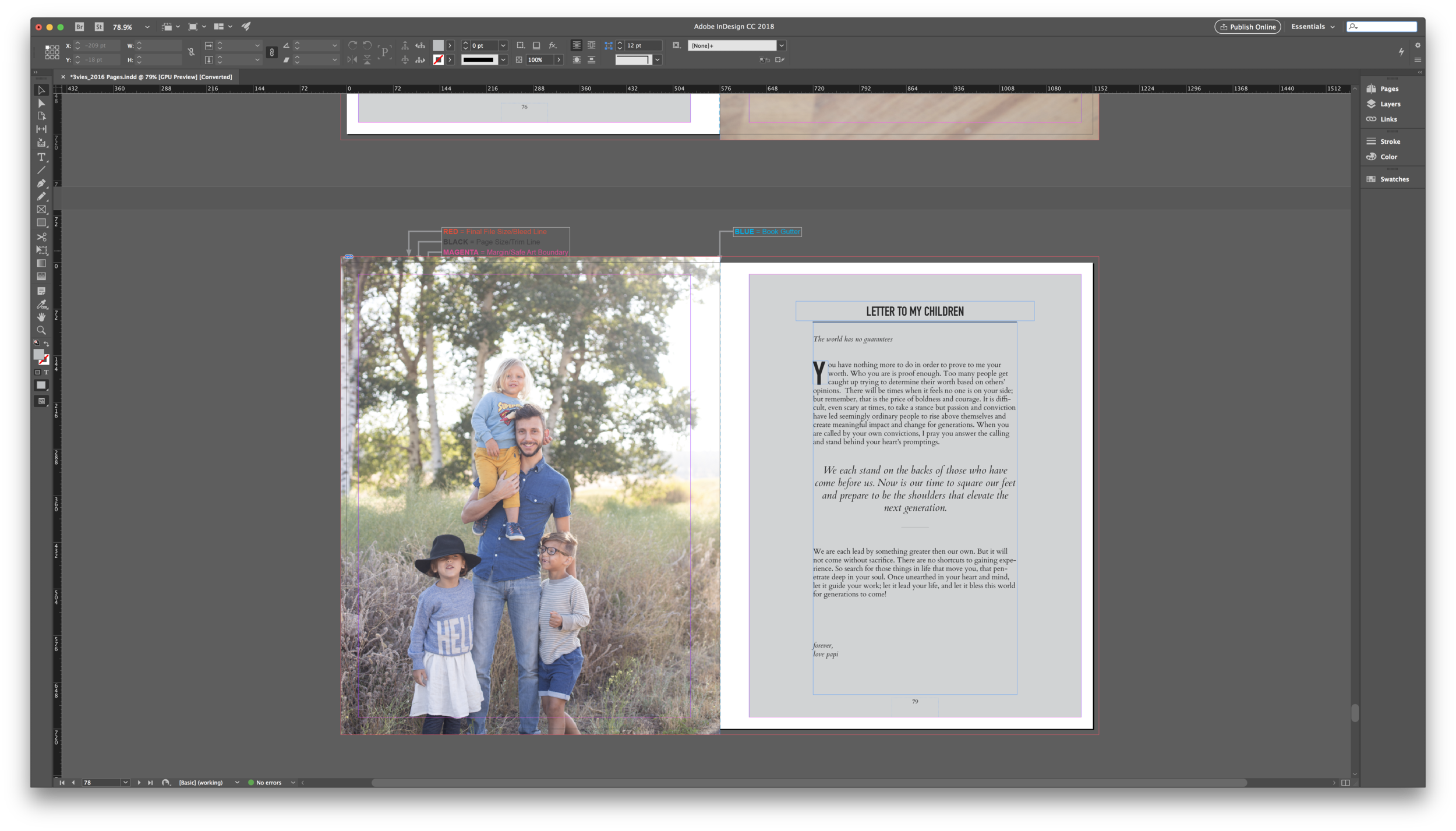
I knew from the beginning I needed a way to print the magazine on demand. I Didn’t have any capital for inventory and traditionally you have to have bulk orders for major printers to even consider you project. I looked at several on-demand printers in my research and I decided to go with blurb. The main reason for blurb was it came closes to the final product I had in my mind. Originally I ordered the magazine style but when I got the first print I was not happy with the quality or feel. I was wanting the look and feel of an indie magazine like kinfolk, offscreen or trouvé. I did more research and found the trade book to be a good fit. It had great weight and feeling in your hand. Also the uncoated, heavier paper gave it a higher quality feel of indie magazines. I am not a fan of the glossy cover and would have preferred a matte finish but that option is currently not available.
Each issue has been eighty-four pages on white, uncoated 70# paper, 105 GSM. To date, I have sold three copies of 2015 at launch and then two copies of 2016 at launch. One person also bought 2015 with their pre-order of 2016. For the business model, when a person orders a magazine, I turn around and order one from blurb, and at $21.98 a magazine. It takes 3 weeks to get the magazine printed and shipped to me. Then I repackage it and ship it. Upside there is no inventory, down side is it takes 3-4 weeks to get a magazine shipped to someone.

I also wanted to circle back to startup camp, which I talked about earlier. For the course it helped me write my first business plan. One of the many nuggets of wisdom I have taken away from that course was that a business plan is not for investors or to get a loan. It is first and foremost for you the entrepreneur! It is to help you figure out your plan. So if you read through all the other “how to build the best business plan” articles and you think they don’t work for you, you’re probably right. Make it however it best helps you understand each piece of your business and where you need to focus attention or what goals you are trying to hit. The course also pointed out that your business plan is not a one and done thing. It suggested taking it out every quarter (or whatever the frequency works best for you) to review and update it. It’s not just about numbers either. It contains your mission, vision, as well as other expenses and projections.
With shipping I was actually loosing money because I had put a flat rate of $6.99 but made the mistake of not using the flat rate packaging. I didn’t like the aesthetics of them. A little thing I know, but it ended up costing on average an extra $5-10 per magazine. I used free trial of ship station which hooks up to Squarespace commerce site nicely but since there is such a low demand I didn’t want to pay to continue the service. I really enjoyed ship station and would recommend it if you are looking for a labeling/shipping solution. Mostly because of how wonderful and easy the integration was with a Squarespace site.
This passion project has been a testing ground for experiencing entrepreneurship. This is something that can’t be theoretical, it has to be experienced. Just like most things in life, you learn by doing. Everything I have done was to get myself uncomfortable. This has been about developing the muscles and skills needed to launch and maintain a product/brand. So whatever it takes for you to start your passion, do it today. Doing things that push you outside your comfort zone is the best way to grow. Get out there and get uncomfortable.